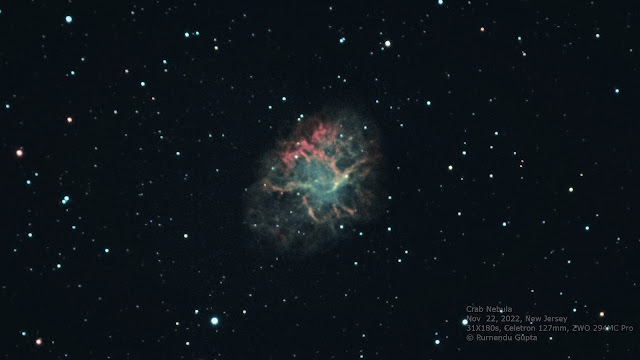Patience pays. Or is it persistence. Finally got a glimpse of the "Great Conjunction" of Jupiter and Saturn on the evening of Dec 23, two days after its closest approach (on the 21st). After a major snowstorm in New Jersey the prior week, dense clouds and fog that hung over the US east coast persisting for five days relented for a few hours enough for this capture from my front porch.
The angular separation at peak conjunction on the evening of the 21st was about 6 arc minutes. In this image from 2 days later, they’re slightly wider apart* but still close enough for both to fit in a single eyepiece view of a medium size telescope. Jupiter's four largest moons are visible in the picture left to right are Io, Europa, Callisto and Ganymede with an orbital plane inclined at an angle to the ecliptic.










